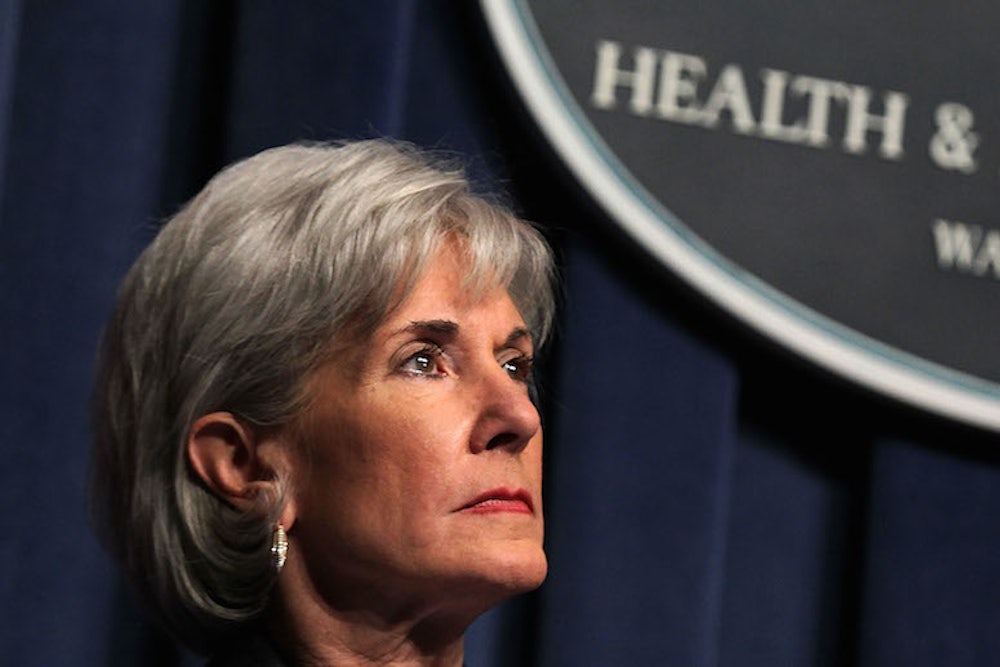The Obama Administration has released another enrollment report about the Affordable Care Act. And this one doesn’t contain any huge, earth-shattering revelations. On the most well-known issue of all—how many people are getting private insurance through Obamacare—the report basically confirms what the Administration announced last month.
More than 8 million people signed up for the plans. Contrary to what House Republicans have insinuated in the last 24 hours, reports from insurers suggest that somewhere between 80 and 90 percent of those people will actually pay their premiums. If so, then the number of people who actually have coverage through Obamacare’s marketplaces right now is probably somewhere between 6.4 million and 7.2 million—which is consistent to what the Congressional Budget Office and other professional forecasters expected.
But this new report is far more extensive than the prevoius update. It's got all kinds of breakdowns—by age, state, insurance selection, and so on. It's going to take analysts a while to go through it all, but here are a few takeaways.
1. Medicaid enrollment continues to grow. The HHS report also has updated information on enrollment in Medicaid and the Children’s Health Insurance Program. It’s now 4.8 million higher than it was in September of last year. The number will keep going up. Remember, there’s no special open enrollment period for these programs like there is for private insurance. People can sign up whenever they become eligible, as has always been the case, and non-profit organizations are going to keep running outreach programs.
2. The age mix is good nationally, but some states could have problems. Insurers rely upon young and healthy people to sign up in relatively large numbers, because their premiums effectively subsidize the high medical costs of the old and sick. And the nationwide numbers look pretty good. According to HHS, 28 percent of people selecting private plans are between the ages of 18 and 34. That’s almost exactly the same as it was in Massachusetts, when that state introduced its version of the same reforms.
But there isn’t one, unified national insurance market. There are 51 separate markets, for the states and the District of Columbia, and the numbers vary a lot from market to market. Some states, including several in the Deep South, have even higher precentages of young adults between 18 and 34. (The District has by far the most, with 45 percent, but that's for idiosyncratic reasons.) But in other states it's much, much lower—18 percent in West Virginia, for example, and 22 percent in Ohio.
Insurers in those states might end up raising rates significantly next year, although it will depend on a bunch of other factors, like what kind of enrollment insurers were expecting. Some of those states have older populations anyway. It also remains to be seen how much the new system's "shock absorbers"—like the so-called risk corridors that protect insurers from excessive losses—will keep premiums in check.
3. The racial and ethnic mix isn't quite what the experts expected. Relative to expectations, African-Americans signed up in higher numbers, which is good, but Latinos signed up in lower numbers, which is not good. It’s impossible to know exactly why this happened and, all things considered, the differences aren't that large. But one factor in the relatively depressed Latino participation could be the delayed introduction of a Spanish-language version of healthcare.gov.

4. The number of uninsured is coming down, but we still don't know by how much. The HHS report actually has some new data that sheds light on that question: Of the 5 million people who applied for financial assistance, the vast majority (86 percent, by my math) said they did not have prior coverage. Previous studies—by Gallup, the Rand Corporation, and the Urban Institute—have also suggested the law is reducing the numer of uninsured Americans significantly. None of that data is definitive, however, and we're likely stuck with that uncertainty for quite a while.
Note: This item has been updated.
